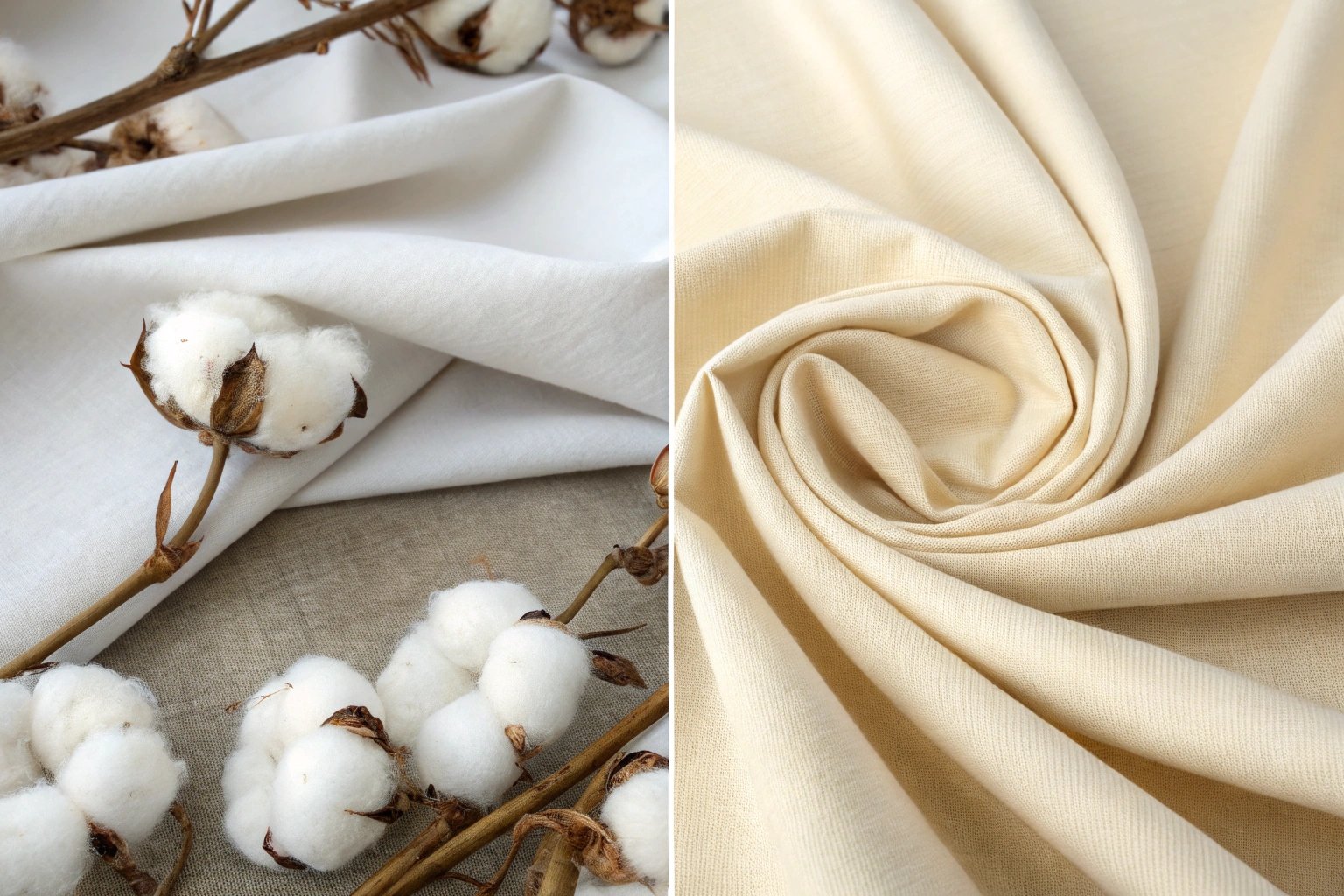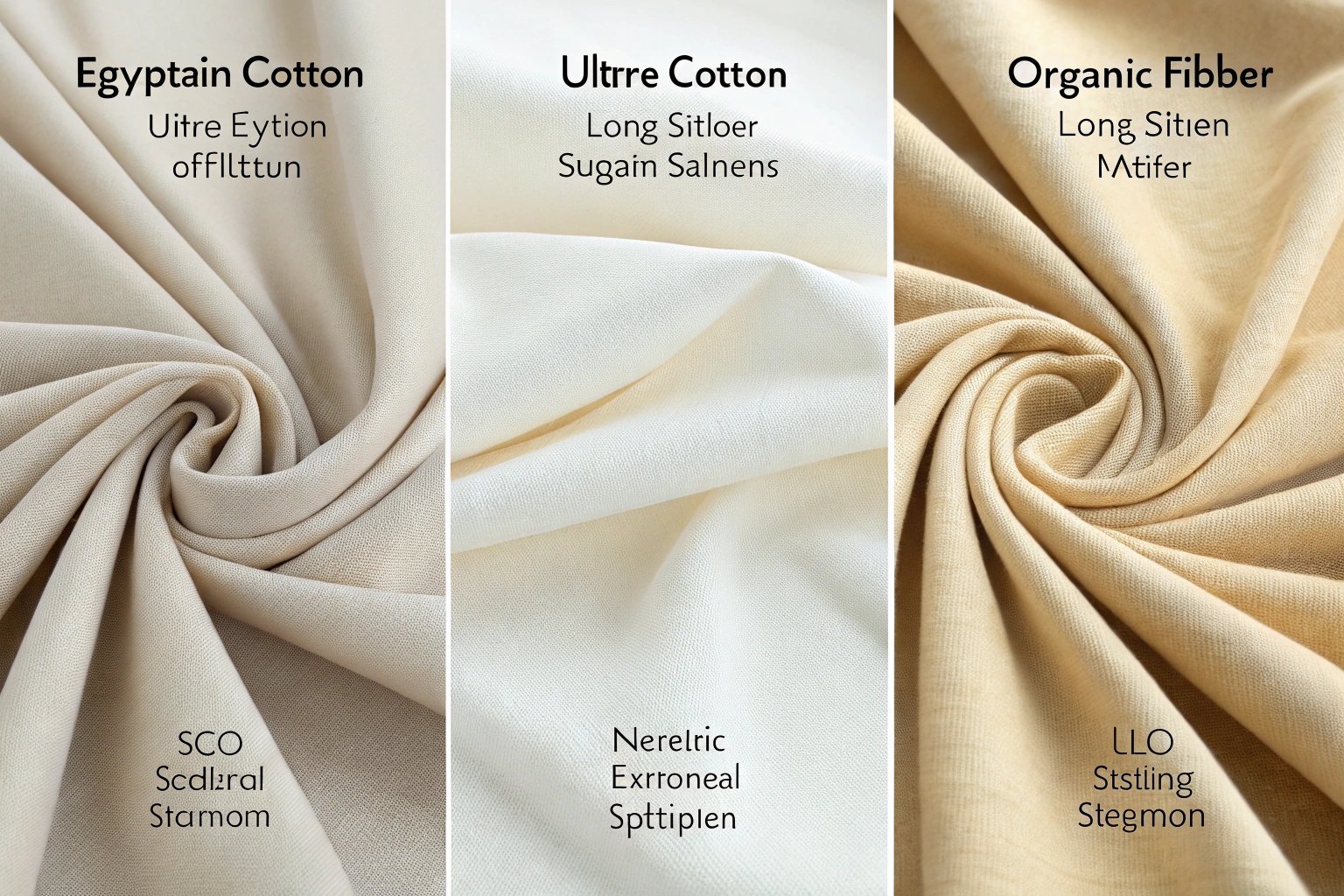When it comes to fabric selection, cotton is a top choice for its comfort, versatility, and breathability. However, within the world of cotton, two varieties—Slub Cotton and Pima Cotton—stand out for their distinct qualities. While both types offer unique benefits, understanding their differences can help you choose the right fabric for your clothing, home textiles, or product line.

In this article, we will compare Slub cotton and Pima cotton, exploring their differences, qualities, advantages, and disadvantages to determine which one is better for specific needs. Whether you’re designing for a casual, laid-back style or aiming for a luxurious, high-end look, this guide will help you understand which cotton type is the perfect fit for your products.
What Is the Difference Between Pima and Slub?
While both Pima cotton and Slub cotton are types of cotton, their differences lie in their texture, construction, and performance. Here’s a breakdown of the main distinctions:
Pima Cotton:
- Origin: Pima cotton is grown primarily in the United States, Peru, and Egypt. It’s known for its long, smooth fibers, which result in a silky finish.
- Texture: Pima cotton is soft, smooth, and highly durable. The fibers are finer and longer than regular cotton, giving it a luxurious feel.
- Durability: Pima cotton is more resistant to pilling and fading, making it ideal for high-quality clothing and textiles that are designed to last.
- Finish: The high-quality fibers result in a smooth, uniform fabric that is ideal for both casual and formal clothing.
Slub Cotton:
- Origin: Slub cotton is made by intentionally weaving cotton yarn with uneven thickness, creating a distinctive textured surface.
- Texture: Slub cotton is known for its unique, irregular texture, which gives it a casual, natural look. The slubs (lumps or bumps) in the fabric add a sense of depth and visual interest.
- Durability: While it is durable, Slub cotton’s irregular texture means it may not be as strong or as smooth as Pima cotton, especially in finer weaves.
- Finish: The finish of Slub cotton is often more relaxed and rustic, making it ideal for casual wear or bohemian-style fashion.
In short, while Pima cotton is smooth, soft, and durable, Slub cotton offers a textured, natural feel that’s ideal for relaxed, casual styles. The choice between them depends on your design goals and the aesthetic you wish to achieve.
Is Slub Cotton Good Quality?
Slub cotton is a high-quality fabric in its own right, but its quality is different from that of Pima cotton. The unique slubbed texture—created by the varying thickness of the yarn—gives it a distinctive, natural appearance that many people find appealing. However, it’s important to understand that the irregular texture may result in less smoothness compared to finer cotton types.
Advantages of Slub Cotton:
- Unique Aesthetic: The slubbed texture creates a distinctive, casual look that’s highly sought after in bohemian-style fashion and laid-back clothing.
- Breathability: Like other cotton fabrics, Slub cotton is naturally breathable and ideal for warm-weather wear.
- Comfort: The fabric’s relaxed texture offers comfort and lightness, making it a popular choice for summer clothing and casual wear.
Potential Disadvantages:
- Irregularity: The uneven texture of Slub cotton may not be to everyone’s liking, and its unfinished appearance may not work for more formal or polished looks.
- Durability: The irregular weave might affect the fabric’s strength when compared to Pima cotton, especially under heavy use.
Overall, Slub cotton is good quality for specific uses where textural appeal and a casual aesthetic are desired. It’s great for relaxed, comfortable clothing but may not be as suitable for high-end, luxury products that demand smoother, more uniform fabrics.
What’s Better Than Pima Cotton?

While Pima cotton is one of the highest-quality cottons available, there are some alternative fabrics or varieties that can be considered even more luxurious or specialized, depending on the intended use:
Egyptian Cotton:
Egyptian cotton is often considered superior to Pima cotton due to its even longer fibers and ultra-soft texture. It is renowned for its luxury feel, exceptional durability, and resistance to pilling. Egyptian cotton is often used in high-end bedding and luxury clothing.
Organic Cotton:
If sustainability is a priority, organic cotton can be a better option than Pima cotton. It’s grown without the use of synthetic pesticides or fertilizers, making it a more eco-friendly alternative. While it may not always have the same level of softness as Pima cotton, it’s still a high-quality, natural fabric.
Supima Cotton:
Supima cotton is a type of Pima cotton that’s grown exclusively in the U.S. and is regarded as the best quality Pima available. Supima has even longer fibers, offering superior softness, strength, and resilience compared to regular Pima cotton.
While Pima cotton is excellent, alternatives like Egyptian cotton or Supima cotton are considered better for those looking for the highest quality and luxury finish in their products.
What Are the Disadvantages of Pima Cotton?
While Pima cotton is often considered the gold standard in cotton fabrics, it does have some disadvantages to keep in mind:
Price:
Pima cotton is more expensive than regular cotton due to its high quality and longer fibers. As a result, products made from Pima cotton may be priced higher than those made from standard cotton or other materials.
Durability in Harsh Conditions:
Though Pima cotton is generally durable, it’s still susceptible to wear and tear in certain conditions. In very harsh environments or under rough use, it might not hold up as well as more rugged fabrics.
Wrinkling:
Like other cotton fabrics, Pima cotton tends to wrinkle easily, which can be a downside for those who prefer low-maintenance fabrics that don’t require ironing or steaming.
Limited Breathability in Certain Weaves:
While Pima cotton is breathable in general, some of the finer weaves or denser fabrics made from Pima cotton may not offer the same level of breathability as lighter cottons or blends.
Despite these drawbacks, Pima cotton remains one of the best cotton options for luxury, comfort, and long-lasting quality. Its softness, durability, and color retention make it ideal for high-end apparel and bedding.
Conclusion
The choice between Slub cotton and Pima cotton depends on your specific needs. Pima cotton excels in luxury, durability, and smoothness, making it the ideal choice for high-end products like luxurious bedding or high-quality apparel. On the other hand, Slub cotton offers a unique texture and casual aesthetic, making it perfect for more laid-back, natural styles.
By understanding the differences between these two cotton varieties, brands can better tailor their designs to meet customer preferences and market needs. Whether you are creating casual wear with Slub cotton or crafting premium-quality pieces with Pima cotton, both fabrics offer distinct advantages for different types of products.
Ultimately, the best fabric for your product will depend on aesthetic preferences, functionality, and target market.

